After nearly two decades in storage, the great Roman horse from the 1st-2nd century AD is back to occupy the center of the Sala della Niobe at the Uffizi in Florence. The ancient sculpture, part of the famous Niobe group, has been restored and relocated to the room where it remained for a century, from the early 20th century until 2006. At the same time, the room was equipped with a new lighting system that enhances the magnificence of the works and architectural elements.
The return of the Roman horse, along with the new lighting system, renews the appeal of the Sala della Niobe, one of the Uffizi’s most celebrated spaces. “With the new arrangement of the Sala della Niobe,” says Uffizi Director Simone Verde, “it is as if the Uffizi has now acquired masterpieces of painting that were previously essentially invisible due to inadequate museum lighting. Moreover, the return of the great Hellenistic horse to this space after almost twenty years is a new step forward in the project of the historical recomposition of the museum’s collections. Thus one of the most important rooms of the Lorraine era is restored to its full legibility and made available to the public in all its recovered splendor.”
The curator of the Classical Antiquities of the Uffizi Galleries, Fabrizio Paolucci, says, “This operation has made it possible to recompose a famous statuary display in the European antiquarian culture of the 17th and 18th centuries: the children of Niobe now in the Uffizi since the end of the 16th century were exhibited in the garden of the Villa Medici on the Pincio, together with the horse, in homage to Ovid’s verses describing the celebrated myth. This was the image popularized throughout Europe by the prints and drawings of the artists who climbed the Pincian Hill to admire the ancient marble group, a true obligatory stop on the Roman grand tour.”
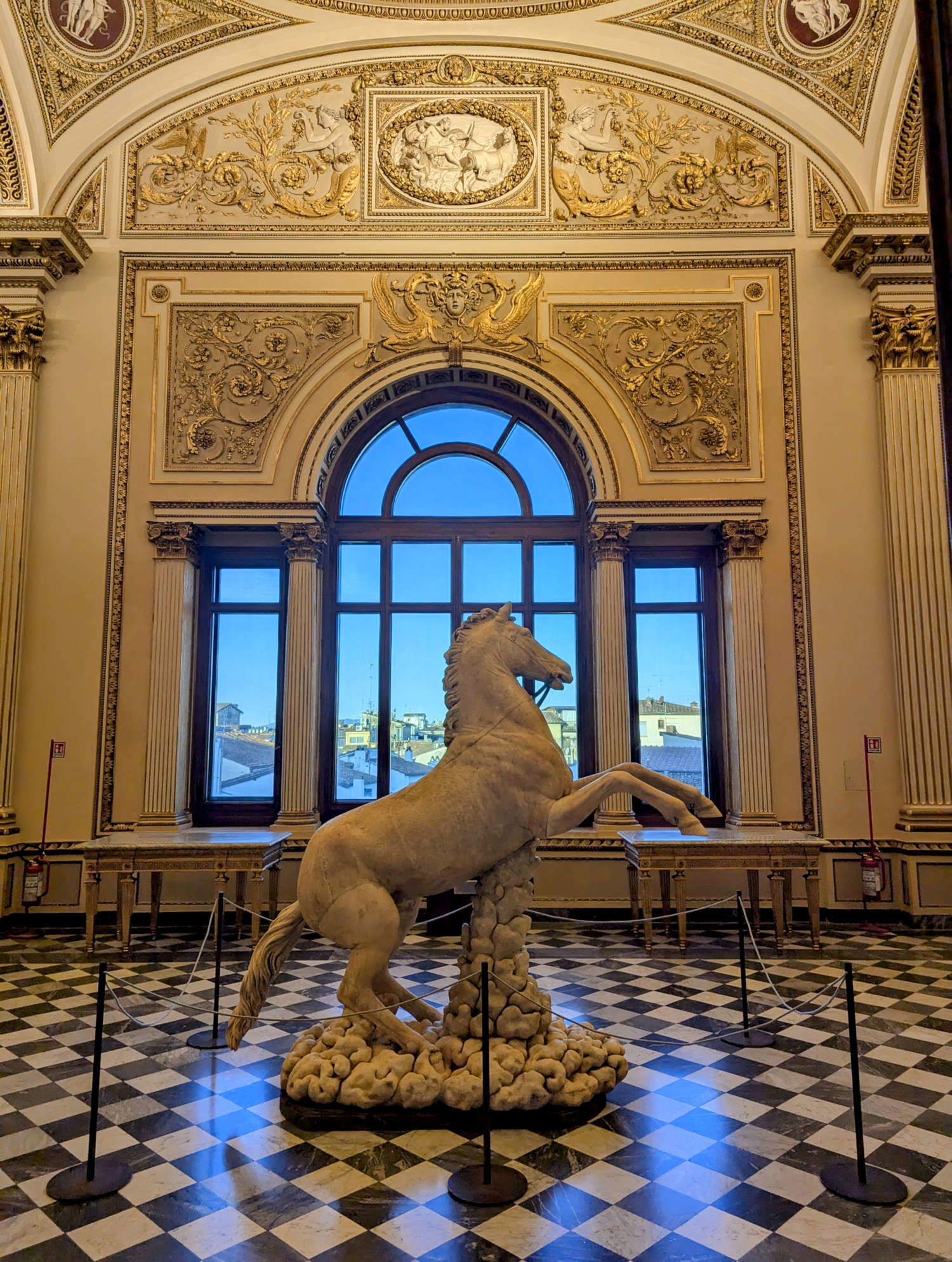
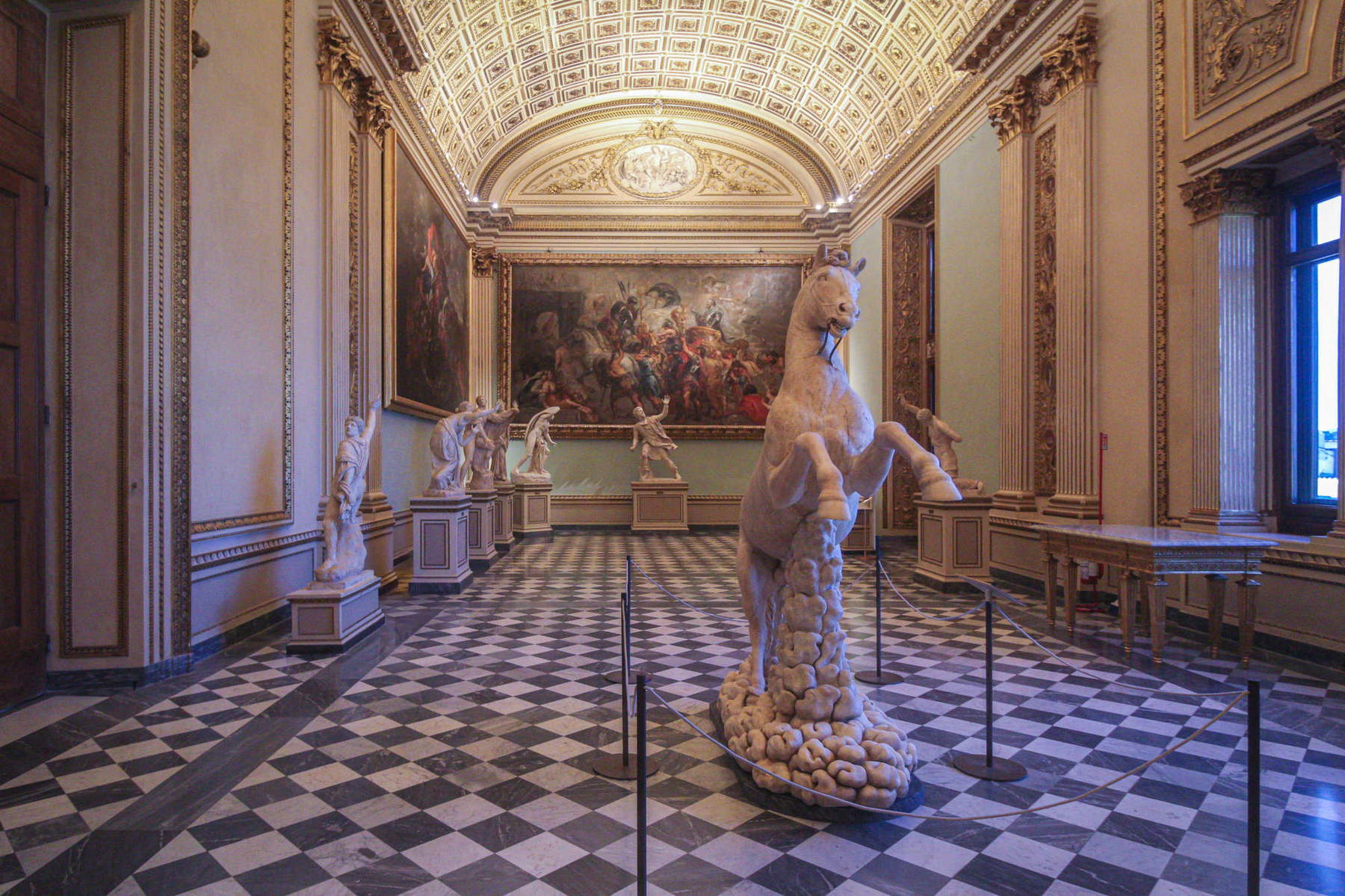
The great marble horse was found in the 16th century at the mouth of the Tiber River and became part of Cardinal Ferdinando I de’ Medici’s collection. Originally displayed in the gardens of the Villa Medici in Rome along with the group of Niobids, it arrived in Florence in 1770 at the behest of Grand Duke Peter Leopold of Lorraine.
The connection between the horse and the group of Niobids is inspired by the myth told by Ovid in the Metamorphoses, which recounts the killing of Niobe’s children by Apollo and Artemis, who descended from the sky on horseback to punish the woman guilty of hybris, since the woman had called herself more prolific than Latona, mother of Apollo and Artemis. This myth was central to the design of the Hall of Niobe, inaugurated in 1780, with a neoclassical decoration of rare beauty and uniqueness. The evocative power of the myth was then already so strong that a special room was designed, at the behest of the Grand Duke himself, to accommodate these legendary pieces. This space, the result of complex renovation and fitting out of the large room in the Third Corridor known at the time as “the Stanzone,” was inaugurated, with the very name “Sala della Niobe,” on February 20, 1780. Alongside the architects Zanobi del Rosso first and Gaspare Maria Paoletti later, Giuseppe del Moro, who made the coffered ceiling decorated with gilded rosettes, the brothers Grato and Giocondo Albertolli for the stucco work, Tommaso Gherardini for the cameos and grotesque motifs around the windows, and the painter Filippo Lucci, who painted the bases of the statues, worked there. In 1781 Francesco Carradori molded the stucco reliefs of the room’s 4 lunettes, in which we find depicted, among others, Apollo and Artemis saicting; a valuable neoclassical graft that, in the Gallery’s itinerary, remains unique to this day. The Horse, initially not present in the display (although displayed on the museum’s tour route), was reunited with the Niobids early last century.
In 2006, the Roman horse was removed from the room to make way for the Roman sarcophagus known as “Of the General,” now relocated to the museum’s ground floor. Since then, the statue has only been displayed on two occasions: in 2017 at the Boboli Gardens for the exhibition A cavallo del tempo and in 2023 at the Verona Fair.
In recent weeks, the Uffizi Galleries’ restorers Sabrina Biondi and Elena Prandi carried out a delicate cleaning operation directly in the Sala della Niobe, allowing visitors to witness the ongoing operations. Now, the horse is back in the center of the room.
“The surface of the horse,” Elena Prandi explains, “was altered by old darkened patinas that prevented the marble from being readable, which were probably carried out to unify the ancient part with the Renaissance additions. After an initial removal of the atmospheric particulate deposit with dry systems, cleaning with ammonium carbonate compresses on cellulose pulp made more evident the difference between the body (the ancient part), compared to the completion with legs, tail and basal part, added later. In the course of this operation, traces of brown materials placed in the lower perimeter part of the sculpture also emerged, probably due to direct contact on the ground outdoors. The color and marble material, after these initial steps, began to re-emerge, but uneven patches of deep yellow color still remained on the surface. It was therefore necessary to resort to laser technology to attenuate these chromaticities in a timely manner. Finally, in the lower part of the sculpture, obvious accumulations of polyester, which were difficult to remove, also emerged from last century’s cast operations.”
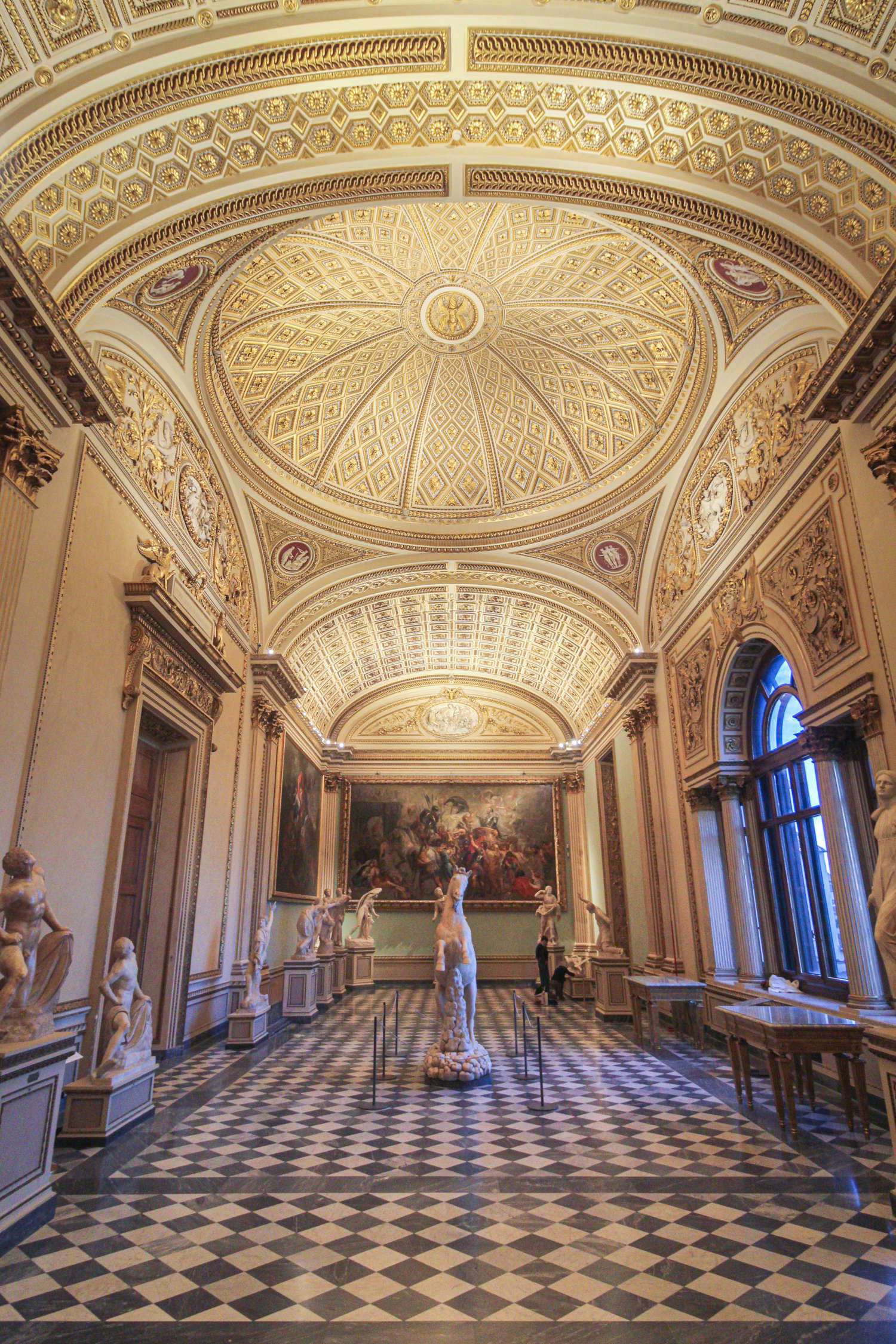
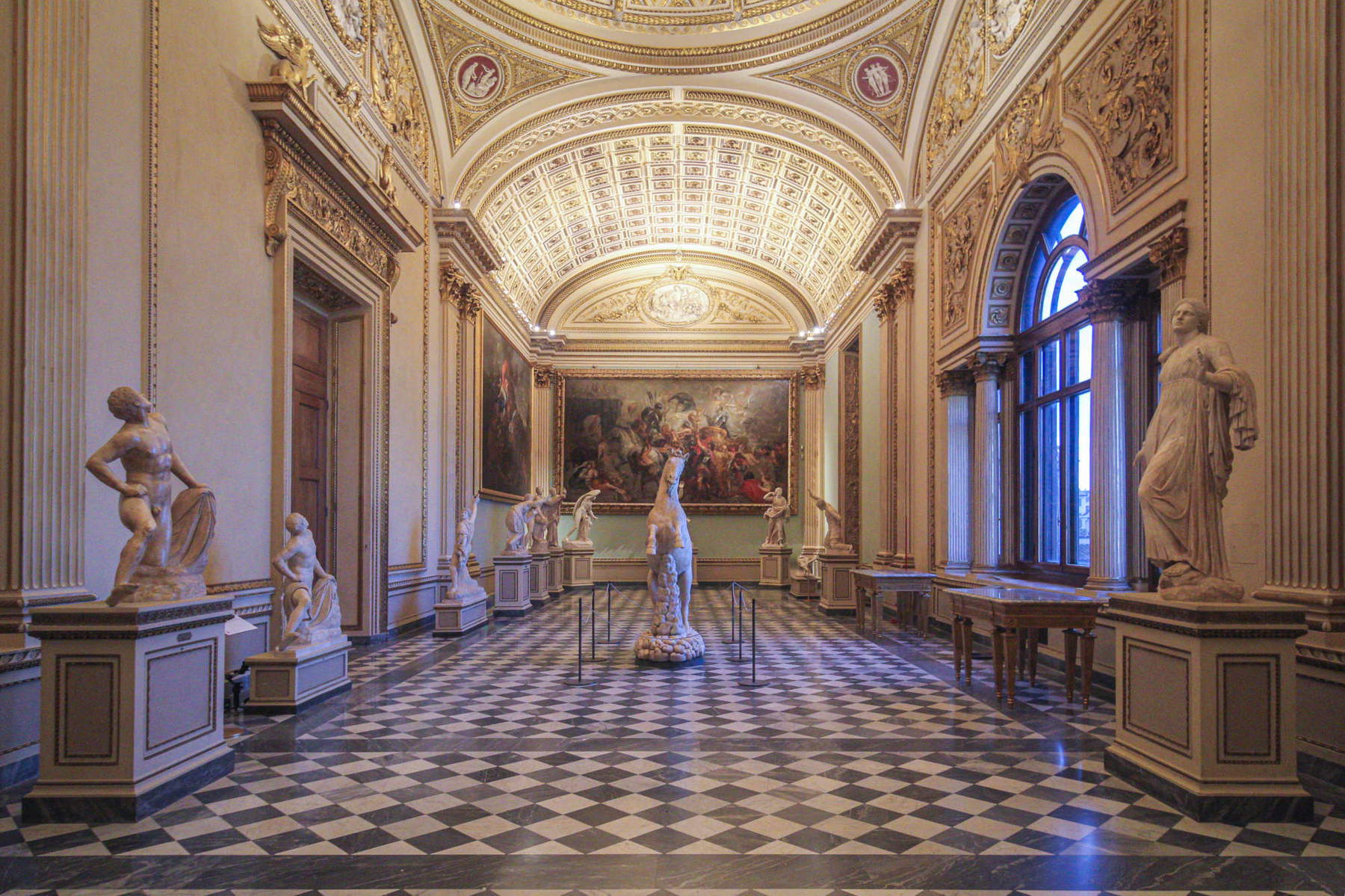
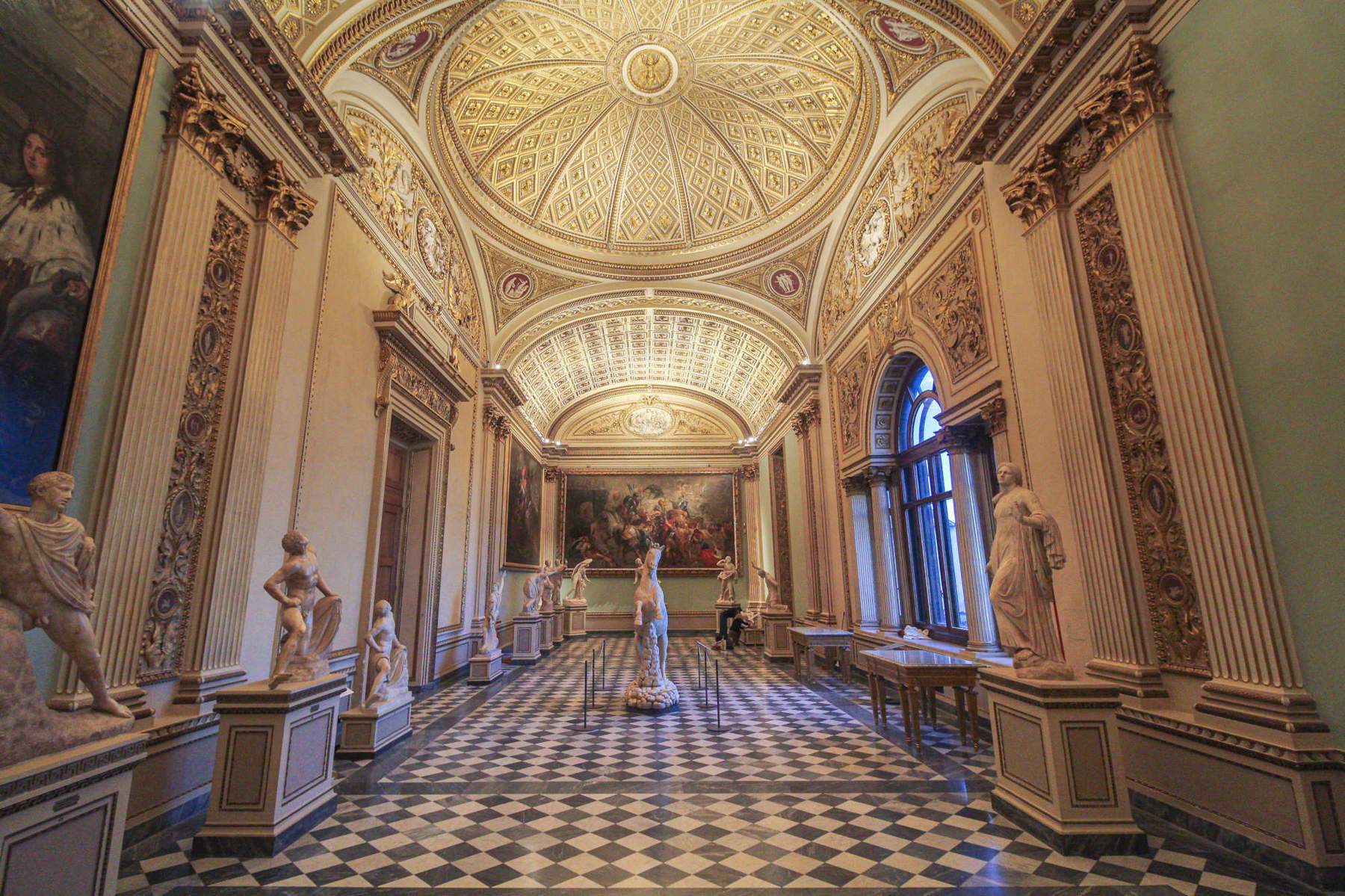
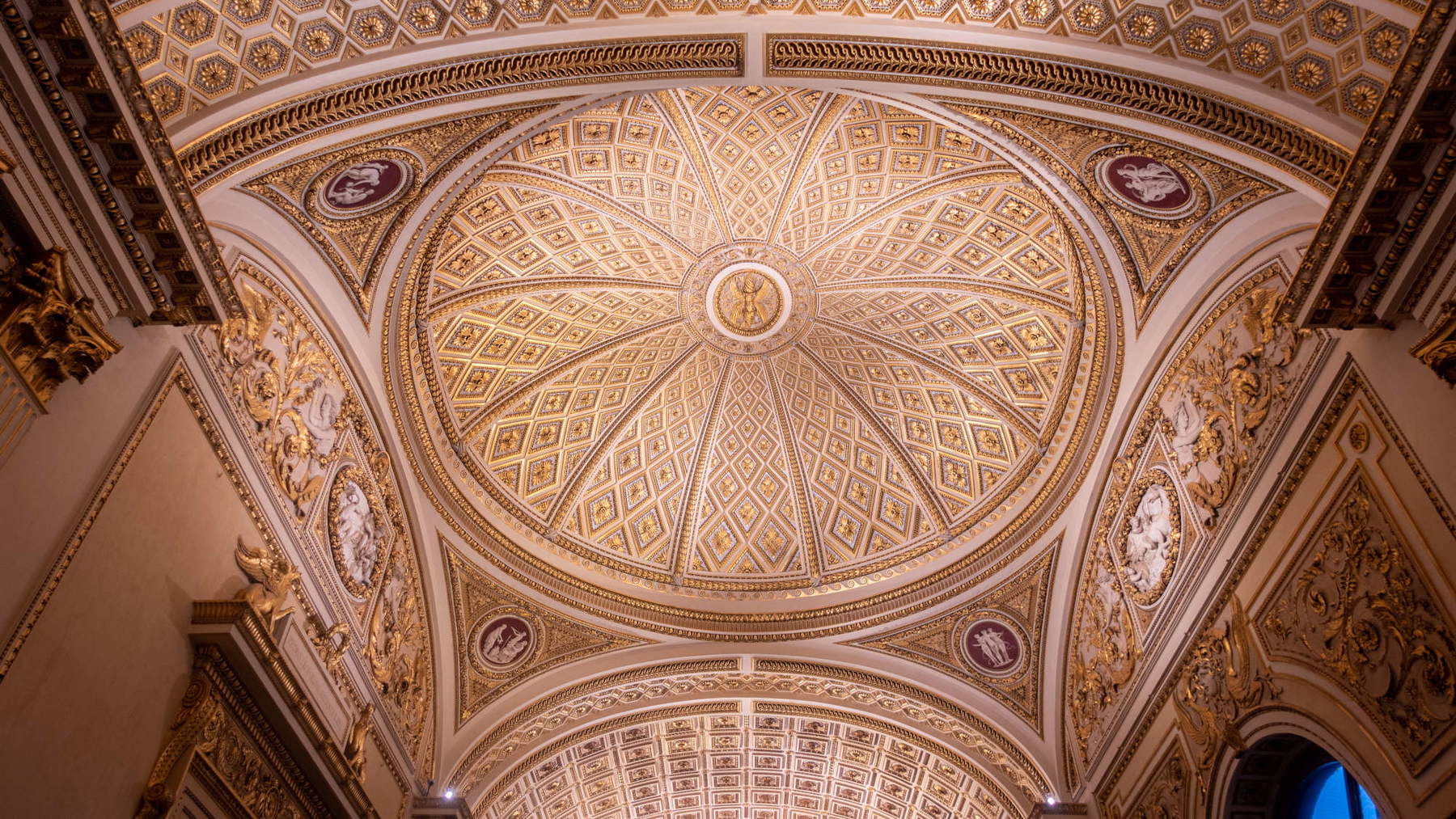
An innovative system with 90 lights with minimal energy consumption and very high color rendering now illuminates the Sala della Niobe, highlighting the vibrant colors of the great paintings by Rubens, Suttermans and Grisoni. For the first time, the chromaticism of the works is directly enhanced, while the details of the gilded ceiling and stuccoes acquire a new luster.
To complete the renovation, the blackout curtains have been removed almost 30 years after their installation, and replaced with protective films against ultraviolet rays, allowing natural light to enter the room and offering visitors a view of Florence’s historic center.
 |
| Uffizi, new light for Sala della Niobe, where the great Roman horse returns |
Warning: the translation into English of the original Italian article was created using automatic tools. We undertake to review all articles, but we do not guarantee the total absence of inaccuracies in the translation due to the program. You can find the original by clicking on the ITA button. If you find any mistake,please contact us.